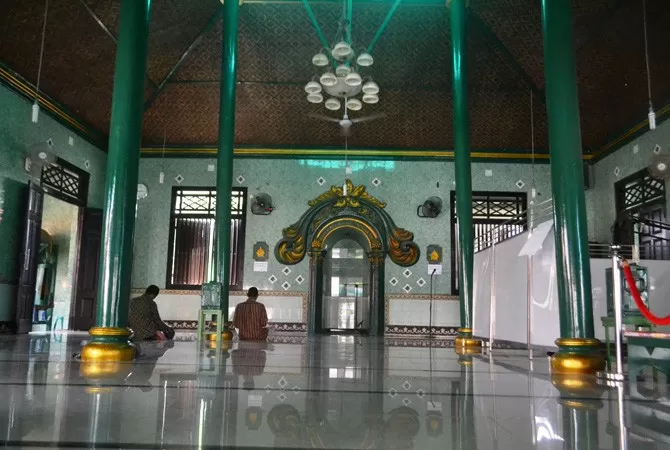Explore how European, Hindu, and Islamic civilizations merged to shape Indonesian unique culture. This article is supported by an academic study of the Kanoman Palace Mosque.
See Table of Contents
Introduction: Indonesia, The Land of a Thousand Cultural Tales
Welcome to Indonesia, a breathtaking archipelago of over 17,000 islands! From the vast stretches of Sumatra to Papua, this nation is a giant mosaic of countless ethnic groups, languages, and traditions. This incredible diversity stems not only from its unique geographical conditions but also from a long history of interaction with various world civilizations.
For centuries, traders and seafarers from India, China, Arab lands, and Europe have visited and interacted with the people of Nusantara. These encounters brought not just goods, but also ideas, beliefs, and lifestyles that profoundly shaped the evolution of Indonesian culture. The result? A rich “cultural tapestry,” where each thread of acculturation is an inseparable part of our national identity.
Curious to see how this cultural acculturation manifests concretely? Let’s delve into a fascinating example documented in an academic study.
More Than Just a Building: Cultural Acculturation at Kanoman Palace Mosque

To understand more deeply how foreign civilizations merged within Indonesian culture, we will look at a concrete example from Cirebon, West Java: the Kanoman Palace Mosque. This historical building is not merely a place of worship, but a living museum that showcases cultural harmony.
A profound academic study conducted by Khoerunisa in her thesis titled “Akulturasi Budaya Eropa, Hindu dan Islam pada Masjid Keraton Kanoman” (IAIN Syekh Nurjati Cirebon, 2017), thoroughly explores this extraordinary phenomenon. You can download the full thesis via this link: https://repository.syekhnurjati.ac.id/2356/.
This research demonstrates that the mosque’s architecture and elements are a tangible manifestation of the blend of three major cultural influences:
- Hindu Influence: Long before Islam became dominant, Hindu teachings flourished in Nusantara. In traditional architecture, this influence is often seen in ornaments, reliefs, or even the layout of buildings. Khoerunisa’s study analyzes how these Hindu traces can still be found at Kanoman Palace Mosque, perhaps in the form of carvings or specific design philosophies traditionally associated with Hindu aesthetics.
- Islamic Influence: As the majority religion and a force that shaped many kingdoms in Nusantara, Islam brought its distinct architectural styles and symbolism. From the mihrab, minbar, to domes and minarets, Islamic elements clearly dominate the mosque’s primary function. However, what’s intriguing is how these elements dialogue with local culture and other influences.
- European Influence: The arrival of European nations, particularly the Dutch, not only brought colonialism but also introduced new architectural styles. Khoerunisa’s thesis specifically identifies how European architectural elements, such as pillars, gates, or the use of certain materials, were also absorbed and adapted into the design of Kanoman Palace Mosque. This demonstrates the dynamic nature of local culture in absorbing and processing foreign influences.
Why Is This Academic Study Important?
Khoerunisa’s thesis is a perfect example of how Indonesian academics contribute to understanding our rich culture. Through in-depth research, interviews (such as with Ibu Ratu Arimbi and Bapak Elang Mohammad Raharja from Kanoman Palace, mentioned in the thesis), and visual analysis, we can see that “acculturation” is not just a theoretical concept. It is a real process etched into every detail of the Kanoman Palace Mosque’s architecture.
This study affirms that Indonesian culture is not a monolithic entity but rather the result of continuous dialogue and blending. It proves that the people of Nusantara possess an extraordinary ability to adapt, adopt, and merge diverse influences into a unique and harmonious identity.
Conclusion: Acculturation as a Strength of Indonesian Culture
The Kanoman Palace Mosque, as analyzed in Khoerunisa’s thesis, is a tangible symbol of the power of acculturation that shapes Indonesian culture. It’s not just a story of the past but also a reflection of the values of tolerance and openness that continue to thrive in our society.
Understanding the “Dynamics of Nusantara Culture: Acculturation and Diversity” means appreciating how various civilizations have contributed to the rich tapestry we call Indonesia. From architecture to art, language, and traditions, every aspect of our culture is a testament to a fascinating and unforgettable historical journey.
As part of Indonesia Overview, we hope this article provides an initial glimpse into Indonesia’s remarkable cultural wealth. For a more comprehensive understanding of Indonesian history and culture in general, visit our pillar article: Indonesian Culture and History. Keep exploring our site for more insights into the many amazing facets of this archipelago nation!
